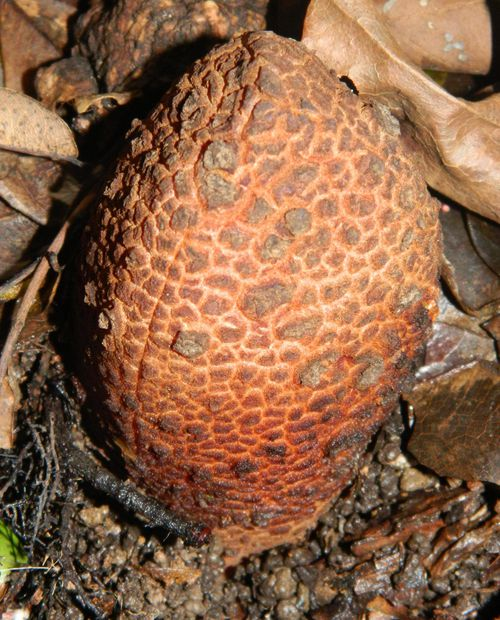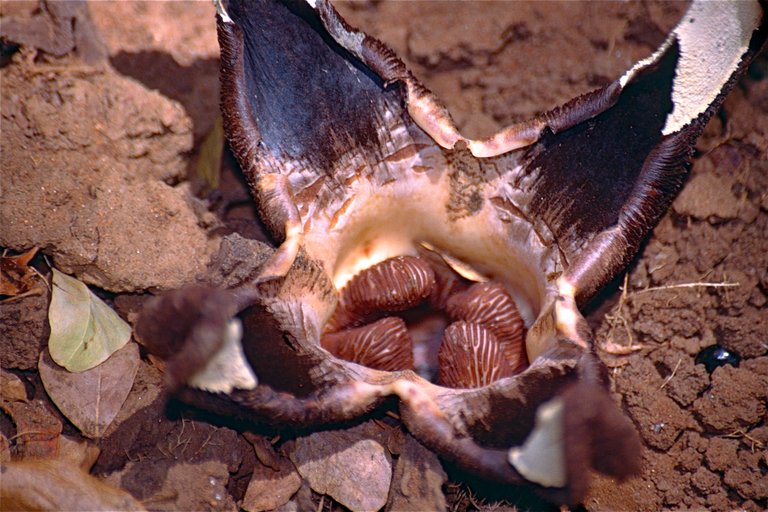Hydnora Plant; The Leafless Plant With Rotten Smell
I saw a documentary on a fungus-looking plant with no leaves or root and it was said not to pop out to the surface regularly and when it does, its flower has a lot of weird characteristics including having a rotten meat smell. Its name is Hydnora and I will be discussing it here today.
This plant s located in semi-arid regions of Africa, Madagascar, and the Arabian Peninsula with about 8 species in the genus being Hydnora africana, Hydnora visseri, Hydnora triceps, Hydnora esculenta, Hydnora sinandevu, Hydnora abyssinica, Hydnora Arabica, and Hydnora Solmsiana. The species is believed to this number because the plant rarely appears to the surface and even when they decide to appear, they do it in extreme remote conditions.
These plant just got discovered in recent times and were found in the market were they were sold as traditional medicine in Africa. The plant doesn't look like a true plant and can be mistaken for a fungi and instead of giving the nice smell like every other flowering plant, it has a rotten smell like that of a rotten flesh. They only appear on the surface for the purpose of flowering which is also used for the purpose of parasitism and reproduction in this case holoparasitism which causes it to get its nutrient and carbon from its host which is usually the plant.
Since it gets its entire nutrient and carbon from its host plant, then it doesn't need a leaf which is why it is one of the few plant with no leaves since it isn't performing photosynthesis as they have lost their ability to photosynthesize. All it just has to do is enjoy itself while its host does all the work to get all the food and nutrient it needs. This plant stay underground as a rhizome or stem and it also lacks root instead it uses haustoria to get into its host's root which allows it to get all the necessary nutrient including water and minerals that it needs to survive. Interestingly, they are even choosy with the type of plant they pick as host and will only do this with legumes, spurge, and tourchwoods.

commons.wikimedia
Hydnora is a member of the Aristolochiaceae or Birthwort family and just as it feeds on its host underground for nutrient and water, you would assume that this should be all but it also does more when its flower pops up for reproduction. It uses the Brood-site mimicry with imprisoning style of reproduction. The flower has this rotten fleshy smell that attracts its insects like beetle to it unlike other plants that give a nice smell and show off their plant color. When the beetle gets to the flower, the flower imprisons them causing the beetle to fall onto its Anthers where it is covered with pollen and then goes straight to the stigma where the flower is pollinated.

commons.wikimedia
When the insect is inside the flower, it moves around trying to escape but this is not possible because the wall of the hydnora flower is slippery. When pollination is done, the flower opens up allowing the insect to leave so as to go pollinate another plant. After fertilization, the flower withers and the ovary becomes a large pod containing tiny seeds that animals like jackal and other mammals come to feed on.
Scientists have been looking to learn more about this plant but it has been difficult since the plant isn't readily seen unless it is about to get its flowers pollinated. Also scientists even after discovering it over 200 years ago have not been able to germinate it in the laboratory. The plant is extremely elusive but it is not endangered as it is quite common since it has to get its flower pollinated.
.
Reference
.
https://www.sciencedirect.com/topics/agricultural-and-biological-sciences/aristolochiaceae
https://pmc.ncbi.nlm.nih.gov/articles/PMC8001087/
https://pza.sanbi.org/hydnora-africana
https://nph.onlinelibrary.wiley.com/doi/full/10.1002/ppp3.9
https://www.obga.ox.ac.uk/article/new-species-of-hydnora-an-extraordinary-parasitic-plant-from-africa
http://www.strangeplants.org/hydnora-africana/
https://botany.org/home/resources/parasitic-plants/hydnora-africana.html
https://pmc.ncbi.nlm.nih.gov/articles/PMC8001087/
https://pza.sanbi.org/hydnora-africana
https://nph.onlinelibrary.wiley.com/doi/full/10.1002/ppp3.9
https://www.obga.ox.ac.uk/article/new-species-of-hydnora-an-extraordinary-parasitic-plant-from-africa
http://www.strangeplants.org/hydnora-africana/
https://botany.org/home/resources/parasitic-plants/hydnora-africana.html

Omg! I've never heard about that.
!discovery 30
This post was shared and voted inside the discord by the curators team of discovery-it
Join our Community and follow our Curation Trail
Discovery-it is also a Witness, vote for us here
Delegate to us for passive income. Check our 80% fee-back Program
Thanks for your contribution to the STEMsocial community. Feel free to join us on discord to get to know the rest of us!
Please consider delegating to the @stemsocial account (85% of the curation rewards are returned).
Thanks for including @stemsocial as a beneficiary of this post and your support for promoting science and education on Hive.
Wow! Sounds really cool.
The plant looks kinda scary tho